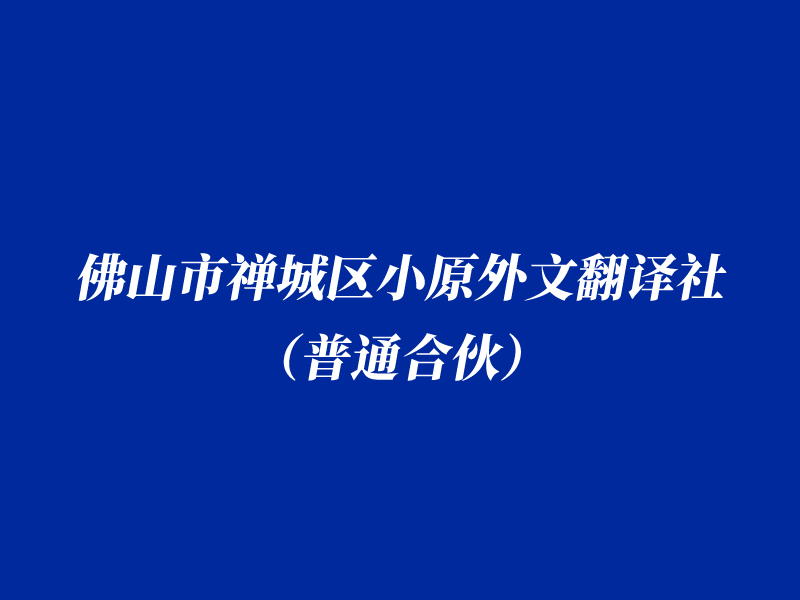May
2023
俄语和汉语在结构、语法、修辞方面有着很多差别,科技俄语翻译在原文内容的基础上要使译文语言通顺、文字简练,佛山翻译公司带大家了解科技俄语翻译常用的方法有什么?
There are many differences between Russian and Chinese in structure,
grammar and rhetoric. Scientific Russian translation should make the target
language smooth and concise on the basis of the original content. What are the
common methods of scientific Russian translation?
1.词类转换译法
Part of speech translation
俄汉两种语言在词汇的构成和造句习惯上存在着较大差异,如果机械地按照原文词类翻译会使译文不伦不类,这时就可以采用词类转换译法。所谓词类转换译法,就是用概念相同而类别不同的汉语译词来翻译原词。词类转换译法在翻译理论上已被公认为一种通用的、重要的翻译技巧。
There are great differences between Russian and Chinese in terms of
vocabulary composition and sentence making habits. If we translate mechanically
according to the original parts of speech, the translation will be incoherent.
Then we can adopt the method of part of speech conversion. The so-called part of
speech translation method is to use the same concept but different categories of
Chinese translation words to translate the original words. Part of speech
translation has been recognized as a general and important translation technique
in translation theory.
2.代换译法
2. Substitution translation
俄汉语言构造、表达习惯和修辞特点不同,在表达同一内容时,两种语言可能用不同的语言手段。所谓代换译法,就是指在翻译时可采用一些与原文不同的语言手段,去代换原文中不能硬译的语言形式,以求明确通顺地表达原文的意义。需要注意的是,代换只是语言形式的交换,而不是内容的随意改变。
Russian and Chinese have different language structures, expression habits
and rhetorical features. When expressing the same content, the two languages may
use different language means. The so-called substitution translation method
refers to the use of some different language means in translation to replace the
language forms that can not be hard translated in the original text, so as to
express the meaning of the original text clearly and smoothly. It should be
noted that substitution is only the exchange of language forms, not the random
change of content.
3.加减词译法
3. Translation of addition and subtraction
俄汉两种语言词汇的含义范围、使用习惯不同,两个民族的表情达意方式也有所区别,所以翻译的目的就是力求译文与原文在意义和精神实质上对等,而不必、也不可能使译文和原文在词量上相当,这是加减词译法的基础。
Russian and Chinese have different meanings and usages of words, and the
expressions and expressions of the two nations are also different. Therefore,
the purpose of translation is to make the translation and the original
equivalent in meaning and spirit, and it is not necessary and impossible to make
the translation and the original text in terms of word quantity, which is the
basis of the method of adding and subtracting words.
(1)加词译法。所谓加词,就是在翻译时根据具体情况,增加一些原文中无其形而有其意的词,以便准确表达原意,使译文文理通顺,符合汉语的行文规范和表达习惯。加词译法有很多种,例如缓和加词、限制加词、补充加词、过渡加词等。
(1) The method of adding words. The so-called addition of words is to add
some words without shape and meaning in the original text according to the
specific situation in translation, so as to accurately express the original
meaning, make the translation text smooth and conform to the writing norms and
expression habits of Chinese. There are many ways to add words, such as mild
addition, limited addition, supplementary addition and transitional
addition.
必须指出,加译的词必须有根据,必须是语义、语法、修辞和逻辑等方面所必不可少的,而决不能凭空地、无缘无故地加添译词,以致画蛇添足,损害原义。
It must be pointed out that the words to be translated must have a basis,
and they must be indispensable in terms of semantics, grammar, rhetoric and
logic. We should never add words to the translation without any reason, so as to
make the snake superfluous and damage the original meaning.
(2)减词译法。所谓减词,就是视具体情况将原文中的某些可致译文拖泥带水、生硬别扭的冗词不译,以**译文简洁明快、严谨精炼。减词译法涉及面很广,有虚词减译、实词减译、逻辑减译、修辞减译等。
(2) The translation method of reducing words. The so-called word reduction
means that according to the specific situation, some redundant words in the
original text that can cause the translation to be sluggish and stiff are not
translated, so as to ensure the translation is concise, clear and precise. There
are many ways to reduce words, such as function words, notional words, logic and
rhetoric.
减词处理后的译文虽然在词量上和原文不尽一致,但句子的意义和内涵却和原文一样。
Although the quantity of words in the translated text is not the same as
that of the original text, the meaning and connotation of the sentence are the
same as those of the original text.
4.语序处理译法
4. Word order processing
俄汉两种语言的表达语序只在少数情况下才会完全相同,多数情况下是不同的。因此在俄汉翻译中,要尽量按照现代汉语逻辑和语法规律,对原文词语的顺序进行变换和调整,以求准确地表达原文的意思,符合汉语表达习惯。语序处理译法包括顺序翻译、逆序翻译、综合变序、局部换位等。
Only in a few cases can Russian and Chinese express the same word order,
and in most cases they are different. Therefore, in Russian Chinese translation,
we should try our best to change and adjust the order of words in the original
text according to the logic and grammar rules of modern Chinese, so as to
accurately express the meaning of the original text and conform to Chinese
expression habits. Word order processing includes sequential translation,
reverse translation, comprehensive change of order, partial transposition and so
on.
5.句型转换译法
5. Transformation of sentence patterns
俄汉两种语言的表达习惯也有很大差别,为使译文能够通畅地按汉语习惯表达,翻译时可对句子结构进行改造。句型转换译法主要有主动句和被动句的转换、否定句和肯定句的转换及无人称句和人称句的转换等。
There are also great differences in the expression habits between Russian
and Chinese. In order to make the translation smoothly express according to the
Chinese habit, the sentence structure can be transformed in translation. The
main translation methods of sentence pattern conversion include the conversion
of active sentence and passive sentence, the conversion of negative sentence and
affirmative sentence, and the conversion of no person sentence and person
sentence.
(1)主动句和被动句的转换。科技俄语(特别是科技文献中)被动句用得多,而汉语被动句用得少,因此翻译时常应将被动句改为主动句,但个别情况也将主动句改为被动句。
(1) The conversion of active sentence and passive sentence. Passive
sentences are frequently used in scientific and technological Russian
(especially in scientific and Technological Literature), while Chinese passive
sentences are seldom used. Therefore, in translation, passive sentences should
be changed into active sentences, but in some cases, active sentences should
also be changed into passive ones.
(2)否定句和肯定句的转换。在实际翻译中,为了更完整地表达出原文的内容或为了照顾汉语的表达习惯,常常需要对俄语的肯定/否定结构进行正反处理,以求译文严谨准确。
(2) The conversion of negative sentences and affirmative sentences. In
practical translation, in order to express the content of the original text more
completely or to take care of the expression habits of Chinese, it is often
necessary to deal with the positive and negative structures of Russian in order
to make the translation precise and accurate.
(3)无人称句和人称句的转换。无人称句是一种没有主语、也不可能有主语的不完全句,句中结构只有一个主要成分—谓语,但谓语的形式表示不出人称的意义,因此在翻译过程中,为了符合汉语的表达逻辑和习惯,常将俄语的某些无人称句译成人称句。
(3) The conversion of the sentences of no one and person. The sentence
without a subject is a kind of incomplete sentence without subject or subject.
The structure of the sentence has only one main component - predicate, but the
form of the predicate can not express the meaning of person. Therefore, in the
process of translation, in order to conform to the logic and habit of Chinese
expression, some sentences without person in Russian are often translated into
sentences.
6.分合句译法
6. Translation of disjunctive and combined sentences
俄汉语句子结构特点不同,两种语言拥有的词汇手段、语法手段以及修辞手段具有很大差异。因此,为使原文的内容表达得明晰确切,通顺流畅,符合汉语的语法修辞习惯,在组织译文安排句式时,常常需要作适当的分合句处理,亦即将简单句转换成复合句,或将复合句转换成简单句。
Russian and Chinese sentence structures are different, and the two
languages have different lexical means, grammatical means and rhetorical
devices. Therefore, in order to make the content of the original text express
clearly, smoothly and fluently, and conform to the Chinese grammar and rhetoric
habits, it is often necessary to make appropriate split and compound sentences
when arranging sentence patterns in translation, that is, to convert simple
sentences into compound sentences or to convert complex sentences into simple
sentences.
(1)分句译法。俄语中的简单句,其实并不简单。其主语部分同谓语部分、主要成分同次要成分、一个次要成分同另一个次要成分之间,常常有着错综复杂的结构语义联系。因此,翻译过程中依据它们之间的逻辑联系,常可把俄语中的一个单句合理地拆分、重组而译成汉语的复合句,以使译文条理分明,表意准确。
(1) Clause translation. In fact, simple sentences in Russian are not
simple. There are often complicated structural semantic relations between the
subject part and the predicate part, the main component with the same important
component, and one secondary component with another secondary component.
Therefore, in the process of translation, according to the logical relationship
between them, a single sentence in Russian can be reasonably split and
reorganized into a compound sentence in Chinese, so as to make the translation
clear and express the meaning accurately.
(2)合句译法。俄汉科技翻译组织译文时,除需要增加句量外,有时还要注意减少句量,即按照原文上下文的语义关系和逻辑意义,把两个或两个以上的分句合并处理成汉语的一个句子,以使译文简洁紧凑,生动耐读。
(2) Combined sentence translation. When organizing the translation of
Russian Chinese sci-tech translation, it is necessary to increase the sentence
amount and sometimes reduce the sentence amount. That is, according to the
semantic relationship and logical meaning of the original context, two or more
clauses are combined into one Chinese sentence, so as to make the translation
concise, compact, dynamic and readable.
7.注释说明译法
7. Interpretation of notes
科技作品翻译时,为了说明原作者的意图、加深译文读者对原文的理解,常可使用注释说明译法,以使译文概念明确,表意清晰。注释说明译法包括前注、后注、前后注、脚注。
In the translation of scientific and technological works, in order to
explain the original author's intention and deepen the readers' understanding of
the original text, annotation is often used to explain the translation, so as to
make the translation concept clear and express the meaning clearly. The
translation of explanatory notes includes pre notes, post notes, before and
after notes and footnotes.
8.重复译法
8. Repeated translation
所谓重复译法,就是重复译出原文中出现的代词或某些省略成分。重复译法的目的主要是为了使译文句子结构匀称完整,表达明确具体,不致产生歧义。重复译法是常用的翻译方法之一。
The so-called repeated translation is to repeatedly translate pronouns or
some omitted elements in the original text. The main purpose of repeated
translation is to make the sentence structure symmetrical and complete, express
clearly and concretely, and avoid ambiguity. Repetition is one of the common
translation methods.
上一篇:化工翻译的注意事项有哪些?
下一篇:口译需要做什么准备?
- [12-27] SCI论文翻译需注意的三个问题
- [09-01] 十二个培养翻译意识的建议
- [05-14] 佛山翻译公司提供特定领域的翻译人才
- [04-17] 如何做好英汉翻译?
- [08-13] 国内重要时政术语英译报告(2019年度)- 外交军事
- [02-07] 如何做好韩语翻译工作?
- [07-09] 翻译新人需知的“行业规矩”
- [03-03] 翻译审校需要注意什么

-
地址1:佛山市禅城区汾江中路144号科华大厦1002室(创业大厦正对面)
电话:0757-82285965 13318391728
-
地址2:佛山市禅城区魁奇路澜石(国际)金属交易中心大厅一楼
电话:0757-82285965 13318391728




